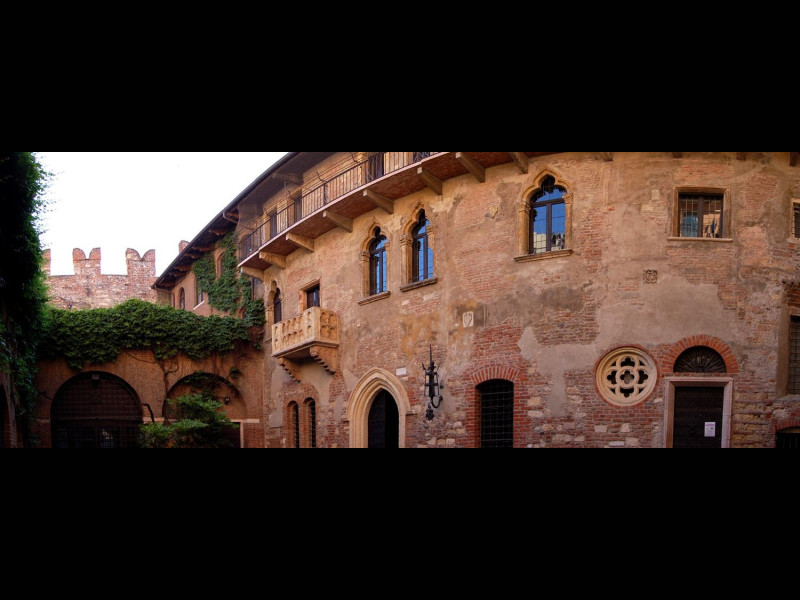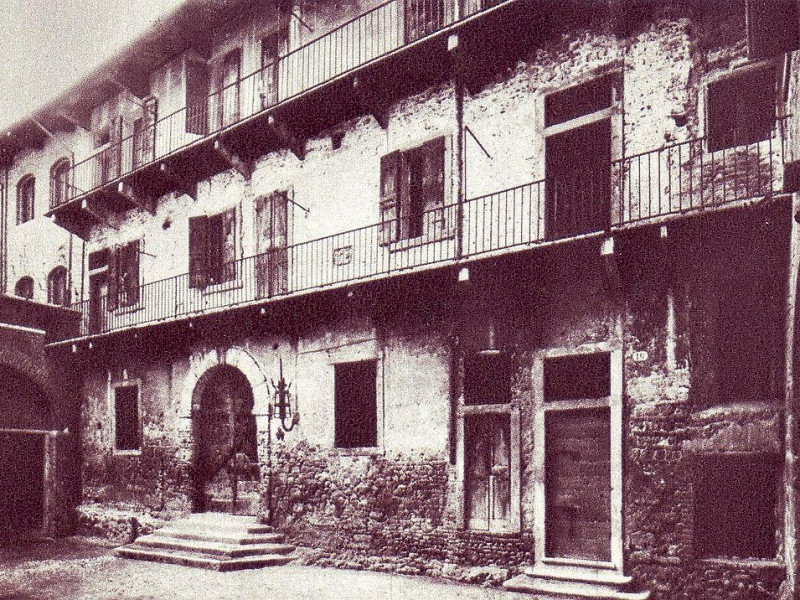Casa di Giulietta
The Juliet's Home is one of the most famous "places of love" in the world. It's a medieval building located a short distance from the central Square of the Herbs. The elements that, in Verona, recall the Shakespeare's tragedy "Romeo and Juliet" are a mix of historical truth myth and the legend: have really existed, in the city, two families named Montecchi and Capuleti (or, Cappelletti): the first, Ghibellines merchants, were indeed involved in bloody battles for control of the city, but with the Sambonifacio family; the presence of the second is cited by Dante Alighieri ("Purgatory", VI, v. 105-107) during his stay in Verona and in the coat of arms on the keystone of the entrance arch to the Palace. In the fourteenth century, the Juliet's Home became a hospitium managed by a family of pharmacists; also hotel between the seventeenth and nineteenth century (quoted by the English writer Charles Dickens). The current appearance of the House and the near building (the foyer of the New Theatre) is the result of an imaginative restoration work by Antonio Vena, which occurred between 1937 and 1940: a medieval scene of pure invention, inspired by an American movie of 1936 and by a famous nineteenth-century painting by Hayez. The famous "Juliet's balcony", which replaces a railing of a tenement, was made by assembling marble remains of the fourteenth century. Only the entrance tower is original (XIII century), although with transformations. The access to the courtyard where there is a statue representing Juliet Capulet, is entirely covered with graffiti and love notes left by the visitors.



